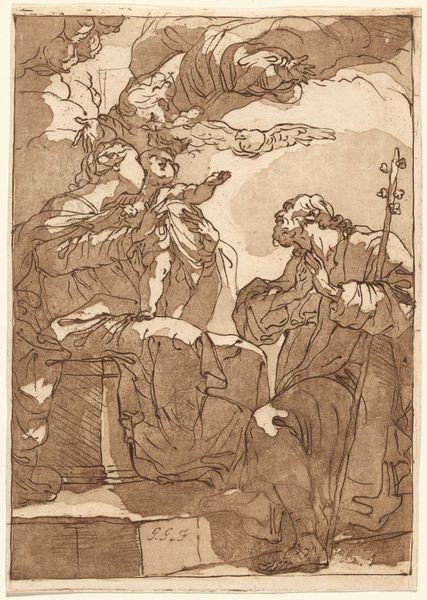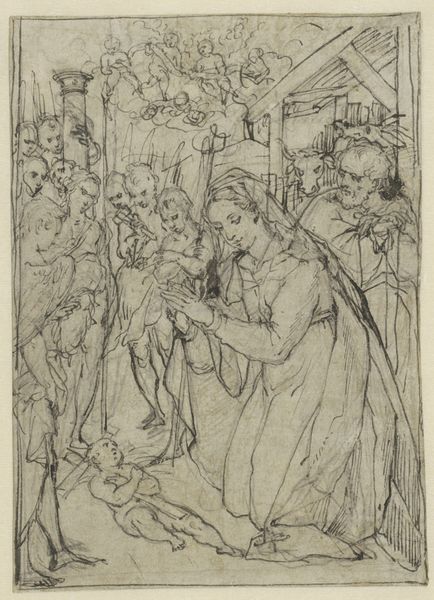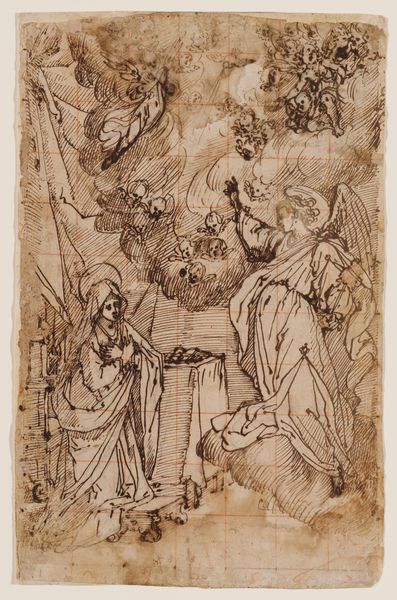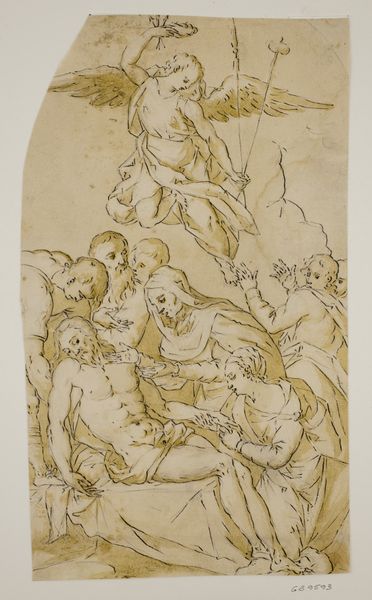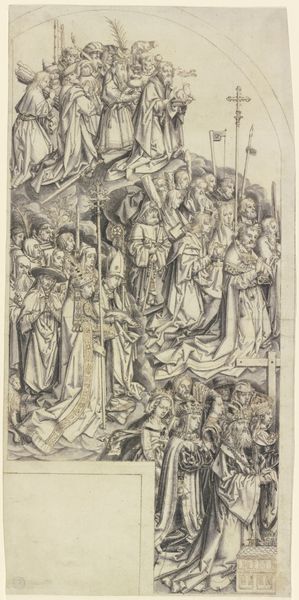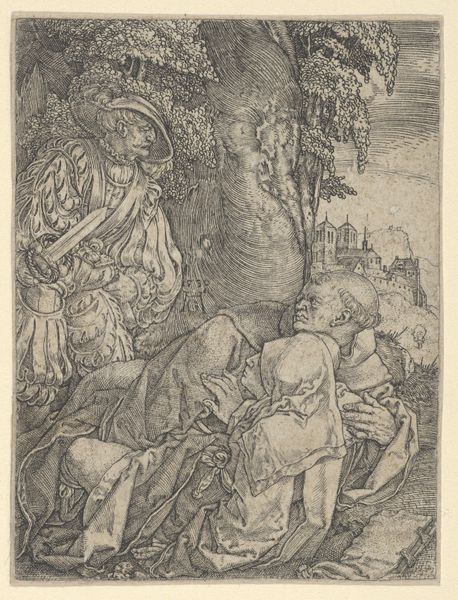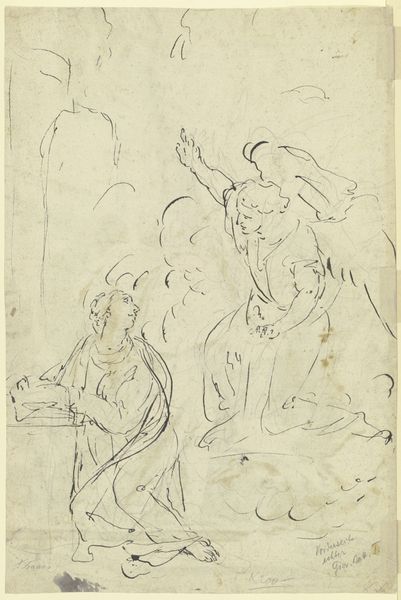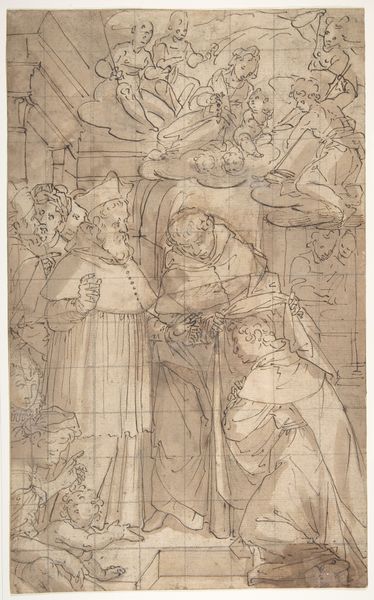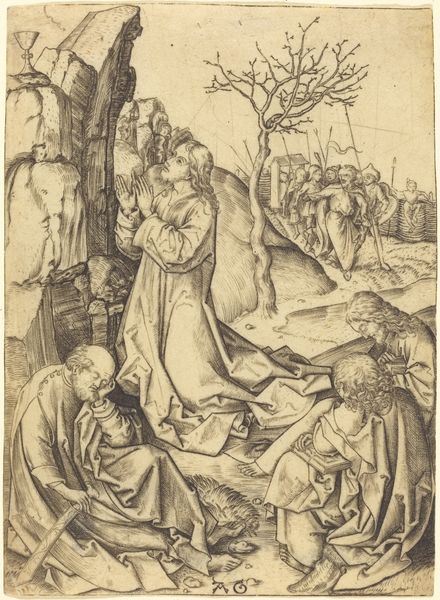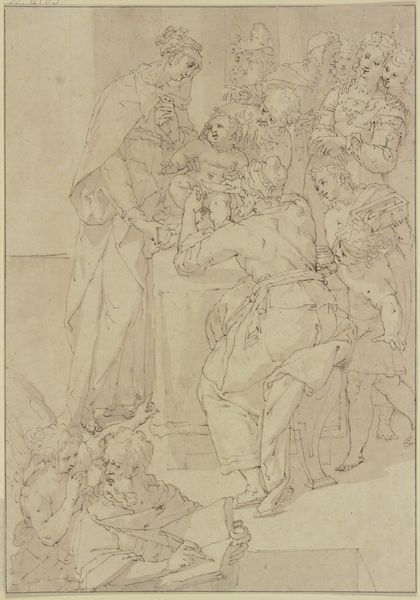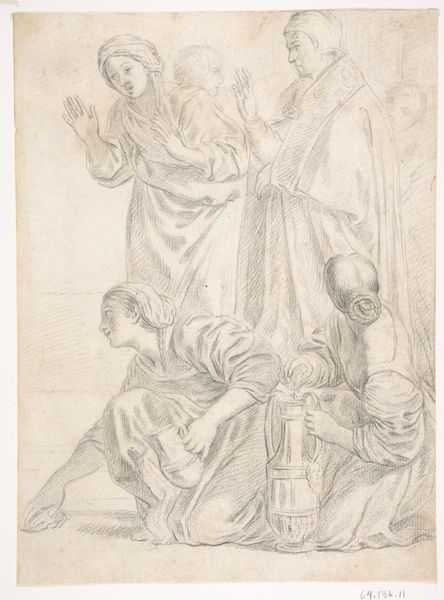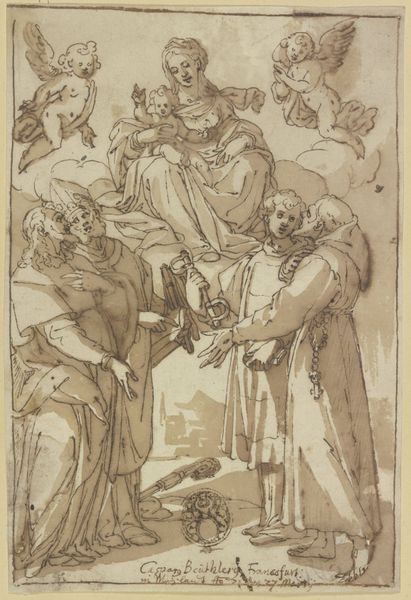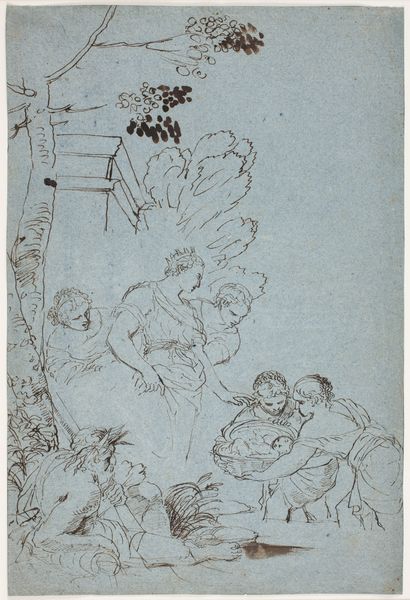
Thronende Madonna mit dem Heiligen Christophorus, zwei Engeln und zwei Stiftern c. 1503
0:00
0:00
drawing, ink, chalk, pen
#
drawing
#
ink drawing
#
pen drawing
#
pen sketch
#
figuration
#
11_renaissance
#
ink
#
chalk
#
line
#
pen
#
history-painting
#
early-renaissance
Copyright: Public Domain
Curator: Here we have a drawing by Hans Burgkmair from around 1503, titled "Thronende Madonna mit dem Heiligen Christophorus, zwei Engeln und zwei Stiftern"—or "Throned Madonna with Saint Christopher, Two Angels and Two Donors." It’s currently housed in the Städel Museum. Editor: It has this immediacy to it, like we’re catching a glimpse behind the scenes of a grand altarpiece. You see all the sketched lines in pen, ink and chalk; the texture hints at the artist figuring out the forms. It's very direct. Curator: Indeed. Consider how this work participates in a broader dialogue regarding patronage and representation during the early Renaissance. Burgkmair positions the donors not just as observers but integral figures in this holy scene, reflecting their social power and desire for divine favor. Note also the Madonna, whose role reflects patriarchal structures. Editor: Yes, but look closer at those lines. The crosshatching to create depth, the varying line weights… it’s all about the hand and the tools. The social status on display for the donors are indicated by these methods of representation. And Christopher, often depicted carrying Christ across a river, literally embodies labor. Curator: The inclusion of Saint Christopher provides a lens to examine broader themes of pilgrimage and protection during that period. The dangers of travel, the desire for safe passage—all resonated deeply within the social fabric of the time. Editor: Right, but don't overlook the material aspect. Chalk and ink weren’t just means of representation; they carried symbolic weight depending on who used them and for what purpose. I wonder if Burgkmair chose them for any social reasons. Curator: Looking through today’s critical lenses, we must examine how such representations contribute to the narratives surrounding gender and power. The Madonna's passivity is reflective of the era’s gender norms, no? The donors occupy these dynamic spaces while the Madonna embodies stillness. Editor: And the labour in representing this… the artistic process, the value placed on skill, the price it all cost. Each contributes to our understanding of labor practices. The donors didn’t just commission this image, they consumed art that in itself represented layers of physical labour. Curator: Thinking about all of that really enriches how we approach the power dynamics reflected and challenged. Editor: And how those techniques influence the artwork's creation, and its consumption. Fascinating!
Comments
No comments
Be the first to comment and join the conversation on the ultimate creative platform.
